PixInsight Intensive Workshop
By Vicent Peris
7 – 13 September 2014, Katonah, New York, USA
This workshop aims at giving a comprehensive operational/technical understanding of Pixinsight to a small group of participants (5–10) over the course of 7 concentrated working days.
Participants will bring all their own unprocessed data sets which the class will share as examples to work on. The structure of the seminar will allow participants a never-before-offered view of Pixinsight, from a beginners level to an expert level, with the goal of having a total immersion in the process of the image creation.
Workshop Dates and Venue
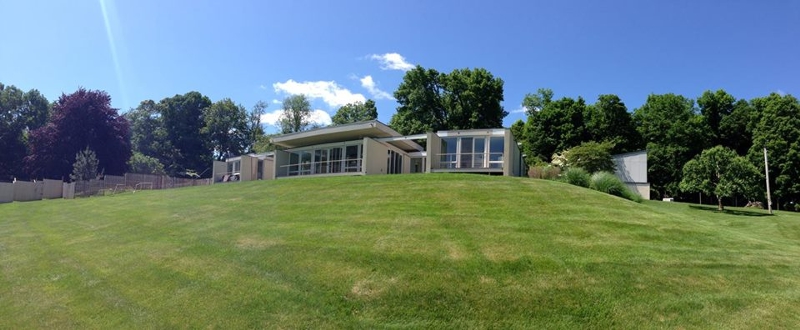
The workshop will take place in a mid-century modern, private home in Katonah, near New York city. We will all sit around a dining table and immerse ourselves in processing data.
The workshop will start on Sunday, September 7th, and will run through Saturday, September 14th. We suggest arriving in the area on Saturday, September 6th, and departing on Sunday, September 15th.
Number of Participants
The aim of this workshop is to have a close encounter with the PixInsight platform and the teacher, so a maximum of 10 participants will be allowed for the full week. Each participant should bring his/her laptop and portable drive to share the data to be processed.
Due to the singular characteristics of this workshop, we need a minimum of 5 participants. Therefore, we stablish a registration period that will finish on August 1st 2014 at 00:00 UT. We'll finally do the workshop if there are at least 5 registrations at that date. Thus, we highly recommend to not make any reservation on flights or hotels in the next three weeks. In case of suspending the workshop, the full registration fee will be refunded. The teacher will keep informed the registered people at any moment.
Rates and Registration
With a total duration of 49 hours, the registration price is 650 Euros. Click the button below to register through PayPal.
This workshop is now SOLD OUT. Thank you so much, and see you in Katonah!.
Logding Options
You need to make your own boarding/meals arrangements. We suggest staying at Holiday Inn in Mt. Kisco:
Holiday Inn
1 Holiday Inn Drive
Mount Kisco, New York 10549
(914) 241-2600
This hotel is about a 10-minute drive to the property where the workshop will be held. We are currently trying to get a special room prices for the hotel—we will confirm this shortly. There are plenty of restaurants in the Katonah/Mt. Kisco area.
Please contact Al Vinjamur (al_v(at)mindspring(dot)com) for further details.
Workshop Methodology
People should expect a general feature / in-depth tour of Pixinsight. Each participant will learn to assemble / generate unprocessed data into respective master files while gaining an understanding of how to pre-process the raw data for optimal signal to noise levels.
Each participants' master files will be processed from start to finish with everyone in the class, processing the same image set at the same time. This will allow all participants to learn the details of each step of the workflow while appreciating that the workflow will vary depending on the quality and characteristics of the data. In every case we will aim to make you generate the highest quality image possible. You will be exposed to several tools in PixInsight while gaining an in-depth operational understanding of each.
The aim of the workshop is to get everybody in the class up to speed using Pixinsight. The small size of the class will ensure that the class moves together at a steady pace, learning by doing.
The first day will be dedicated to understand the general workflow in the PixInsight platform and to inspect the available data sets and their special characteristics. From the second to the sixth day we'll process the selected data sets. The last day will be reserved to review all the different workflows developed during the week and to do a detailed critique of individual choices made by each student in the processing of the images.
About Vicent Peris
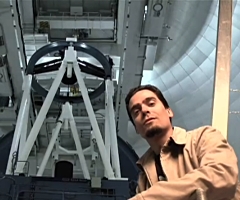
With more than a 15-year career as an astrophotographer, Vicent Peris (Valencia, Spain, 1980) has been working for the last 7 years at the Astronomical Observatory of the University of Valencia (OAUV). He is now leading the world-renowned astrophotographic programs at Calar Alto Observatory (CAHA) with the 3.5 meter and 1.23 meter Zeiss telescopes, the latter in collaboration with the Documentary School of Astrophotography (DSA), applying innovative image processing techniques and software tools. This is the first astrophotography project in the world with access to the observational time of professional telescopes.
You can see some of the published images of the Calar Alto project on the Gallery section of PixInsight's website, as well as some of Vicent's articles about his image processing techniques on the Processing Examples section.
His works have been published and awarded by some of the most reputed publications worldwide, such as APOD, Scientific American, National Geographic, Bad Astronomy Blog, and Sterne und Weltraum.
Vicent is also the official astrophotographer of the ALHAMBRA Survey, a deep cosmological survey conducted by an international scientific collaboration, acquired from Calar Alto Observatory using the 3.5 meter Zeiss telescope. This survey is the first in the world to use a new instrumental technique known as photometric redshifts, in which low-resolution spectra for each object in an image are obtained by using a large, 23 narrow-filter set covering the 3500 – 9500 angstrom light band. You can see some image samples at Vicent's website.
Vicent has also successful experience in forensics and is currently working as an image processing specialist for the Spanish National Police department since two years.
For more information about Vicent's works, please download his portfolio.
Workshop Sponsors
What We Learned at Other Workshops
These are some examples of what Vicent taught at the Munich 2013 and Harvard/CfA 2014 workshops.
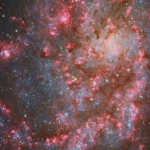
HaRGB Combination Techniques
We learned how to combine narrowband H-alpha data with broadband RGB data in the linear stage, with a focus on specific techniques for H-alpha enhancement control and prevention of noise transfers between broadband and narrowband data.
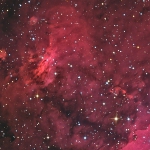
H-alpha Emission Enhancement of Linear and Nonlinear Images
These techniques allow the H-alpha signal enhancement without affecting the color balance of continuum-emitting objects. We also reviewed techniques to enhance emission-line objects in nonlinear images.
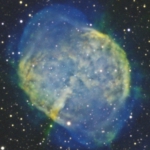
SHO Combination Techniques
An example with M27 data acquired by Max Bacher. Color calibration taking as white reference the integrated light of the whole nebula.

Dynamic range compression
An example of dynamic range management with DSLR data of M42 by José Luis Lamadrid and Vicent Peris.
Invited Speaker: Joseph DePasquale
Image Processing in X-ray Astronomy
As the Science Imager for NASA's Chandra X-ray Observatory, one of the great challenges of creating images for public outreach is balancing science and aesthetics. More often than not, my images combine datasets from telescopes all over the world and above it, spanning the full breadth of the electromagnetic spectrum. Finding creative ways to pull all of these data together into a single image that remains true to the data, yet also causes people to stop and wonder is the key to effective outreach imagery. I employ a suite of tools to accomplish these tasks, including PixInsight and programming languages such as Python and IDL. During the PixInsight intenstive workshop, I'd like to pull you out of your data for a few moments to share my own experiences with the Chandra project, and learning PixInsight and how I've adopted it into my own workflow. I often find that my somewhat unorthodox use of PixInsight has caused me to rethink the way certain tools can be used, and in most cases has given me a deeper appreciation for the power of PixInsight as fully featured image processing platform.
Joseph DePasquale
Joe has been with the Chandra project since 2001, starting out as a Data Analyst and Software Developer. He worked with the telescope operations team for eight years scheduling observations, managing thermal loads, and calibrating one of the observatory's two main instruments, the Advanced CCD Imaging Spectrometer (ACIS). For the past five years, Joe has shifted focus to astronomical imaging in the position of Science Imager for Chandra's office of Communication and Public Engagement. Joe gives frequent public talks on the art of image processing in astronomy as well as on the importance of descriptive metadata in outreach astronomy. Joe specializes in the creation of composite multiwavelength images, often combining data from NASA's Great Observatories (Chandra, Hubble, Spitzer). Joe, and the Chandra outreach team, put great emphasis on the importance of color choice in these composite images with the ultimate goal being to strike the balance between accurately conveying the science in the data while creating an aesthetically arresting image.

